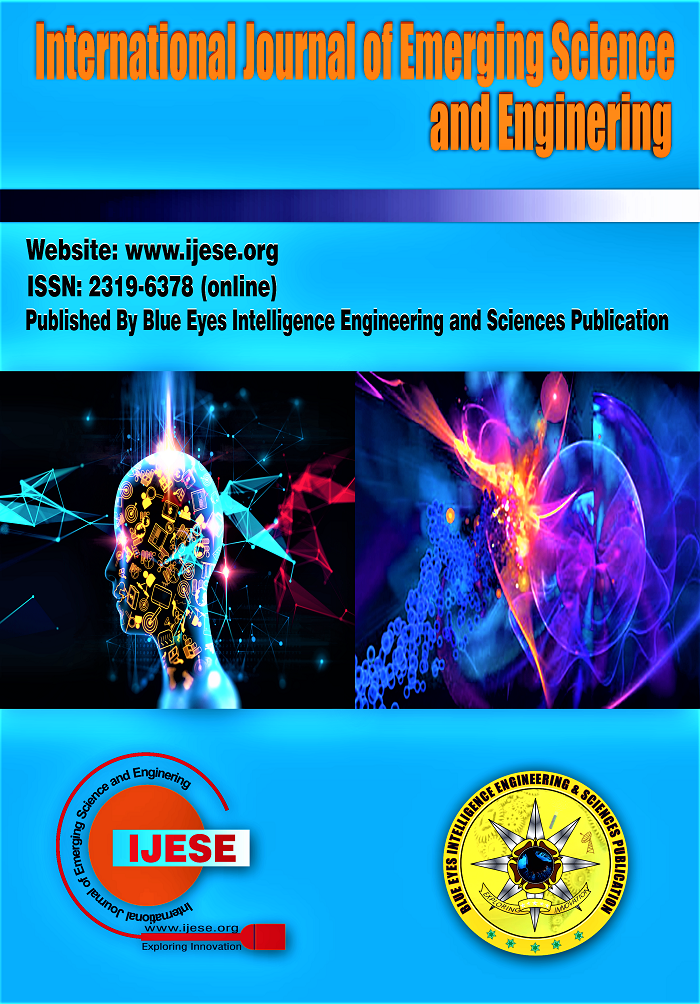Ensemble Learning for Heart Disease Diagnosis: AVoting Classifier Approach
Main Article Content
Abstract
Cardiovascular disease remains a serious public health problem internationally, responsible for a considerable number of fatalities. Early and correct detection of cardiovascular illness is crucial for optimal care and control of the condition. In this paper, we present an ensemble learning technique that includes voting classifiers to increase the reliability of cardiovascular disease diagnosis. We obtained a set of data from five cardiology databases, which included the Cleveland, Hungary, Switzerland, Long Beach VA and Statlog (Heart) datasets, which supplied us with a total of 1189 entries. We employed a feature engineering approach to extract relevant features from the dataset, enabling us to acquire vital information to enhance our model’s performance. We trained and evaluated several machine learning algorithms, such as Random Forests, MLP, K-Nearest Neighbors, Extra Trees, XGBoost, Support Vector Machines, AdaBoost, Decision Trees, Linear Discriminant Analysis, and Gradient Boosting, and then incorporated these models using voting classifiers to produce more reliable and accurate models. Our findings reveal that the proposed ensemble learning process outperforms standalone models and conventional ensemble approaches, obtaining an accuracy rate of 91.4%. Our technique is likely to benefit clinicians in the early diagnosis of heart problems and improve patient outcomes. This work has major significance for the area of cardiology, indicating the possibility for machine learning approaches to boost both the reliability and accuracy of heart disease identification. The recommended ensemble learning technique may be adopted in hospitals to enhance patient care and eventually lessen the worldwide impact of cardiovascular disease. Further study is required to investigate the uses of predictive modeling in cardiology and other medical domains.
Downloads
Article Details
Section

This work is licensed under a Creative Commons Attribution-NonCommercial-NoDerivatives 4.0 International License.
How to Cite
References
World (2021). Cardiovascular diseases (CVDs). [online] Who.int. Available at: https://www.who.int/news-room/fact-sheets/detail/cardiovascular-diseases-(cvds) [Accessed 26 Apr. 2023].
CDC (2022). Heart Disease Facts. [online] Centers for Disease Control and Prevention. Available at: https://www.cdc.gov/heartdisease/facts.htm [Accessed 27 Apr. 2023].
Mayoclinic.org. (2022). Electrocardiogram (ECG or EKG) - Mayo Clinic. [online] Available at: https://www.mayoclinic.org/tests-procedures/ekg/about/pac-20384983 [Accessed 27 Apr. 2023].
Park, D.-J., Park, M.S., Lee, H.K., Young Ho Kim, Kim, Y. and Park, Y.-H. (2021). Development of machine learning model for diagnostic disease prediction based on laboratory tests. Scientific Reports, [online] 11(1). https://doi.org/10.1038/s41598-021-87171-5
May, M.J. (2021). Eight ways machine learning is assisting medicine. Nature Medicine, [online] 27(1), pp.2–3. https://doi.org/10.1038/s41591-020-01197-2
M.A. Ganaie, Hu, M., Tanveer, M. and Ponnuthurai Nagaratnam Suganthan (2021). Ensemble deep learning: A review. Engineering Applications of Artificial Intelligence, [online] 115, pp.105151–105151. https://doi.org/10.1016/j.engappai.2022.105151
Uci.edu. (2023). UCI Machine Learning Repository: Heart Disease Data Set. [online] Available at: https://archive.ics.uci.edu/ml/datasets/Heart+Disease [Accessed 27 Apr. 2023].
Google Developers. (2022). Available at: https://developers.google.com/machine-learning/decision-forests/random-forests [Accessed 27 Apr. 2023].
MANU SIDDHARTHA (2020). Heart Disease Dataset (Comprehensive). [online] IEEE DataPort. Available at: https://ieee-dataport.org/open-access/heart-disease-dataset-comprehensive [Accessed 27 Apr. 2023].
Ibomoiye Domor Mienye, Sun, Y. and Wang, Z. (2020). An improved ensemble learning approach for the prediction of heart disease risk. Informatics in Medicine Unlocked, [online] 20, pp.100402–100402. https://doi.org/10.1016/j.imu.2020.100402
Bharti, R., Khamparia, A., Shabaz, M., Dhiman, G., Pande, S. and Singh, P. (2021). Prediction of Heart Disease Using a Combination of Machine Learning and Deep Learning. Computational Intelligence and Neuroscience, 2021, pp.1–11. https://doi.org/10.1155/2021/8387680
Ahmad Bamanga Mahmud, Ahmadu Asabe Sandra, Musa Yusuf Malgwi and Sajoh, D.I. (2021). Ensemble model for Heart Disease Prediction. [online] Science Progress and Research. Available at: https://www.semanticscholar.org/paper/Ensemble-model-for-Heart-Disease-Prediction-Mahmud-Sandra/c941743125ea116d0862012b15330ce03ee8aa2d [Accessed 26 Apr. 2023].
Almulihi, A., Saleh, H., Ali Mohamed Hussien, Mostafa, S., Shaker El-Sappagh, Khaled Alnowaiser, Ali, A.A. and Moatamad Refaat Hassan (2022). Ensemble Learning Based on Hybrid Deep Learning Model for Heart Disease Early Prediction. Diagnostics, [online] 12(12), pp.3215–3215. https://doi.org/10.3390/diagnostics12123215
Naveed Anjum Itoo and Vijay Kumar Garg (2022). Heart Disease Prediction using a Stacked Ensemble of Supervised Machine Learning Classifiers. 2022 International Mobile and Embedded Technology Conference (MECON). [online]. https://doi.org/10.1109/MECON53876.2022.9751883
Kannan, S. (2022). An automated clinical decision support system for predicting cardiovascular disease using ensemble learning approach. Concurrency and Computation: Practice and Experience, [online] 34(18). https://doi.org/10.1002/cpe.7007
Mahesh, T.R., Kumar, V., Kumar, V., Asghar, J., Oana Geman, G. Arulkumaran and Arun, N. (2022). AdaBoost Ensemble Methods Using K-Fold Cross Validation for Survivability with the Early Detection of Heart Disease. Computational Intelligence and Neuroscience, [online] 2022, pp.1–11. https://doi.org/10.1155/2022/9005278
Ghulab Nabi Ahmad, None Shafiullah, Fatima, H., Abbas, M., Md. Obaidur Rahman, None Imdadullah and Alqahtani, M. (2022). Mixed Machine Learning Approach for Efficient Prediction of Human Heart Disease by Identifying the Numerical and Categorical Features. Applied sciences, [online] 12(15), pp.7449–7449. https://doi.org/10.3390/app12157449
Lubna Riyaz, Muheet Ahmed Butt and Zaman, M. (2022). Ensemble Learning for Coronary Heart Disease Prediction. 2022 2nd International Conference on Intelligent Technologies (CONIT). [online] https://doi.org/10.1109/CONIT55038.2022.9848292
Kanani, P., & Padole, Dr. M. (2019). Deep Learning to Detect Skin Cancer using Google Colab. In International Journal of Engineering and Advanced Technology (Vol. 8, Issue 6, pp. 2176–2183). https://doi.org/10.35940/ijeat.f8587.088619
R, R., & S H, M. (2021). Plant Disease Detection and Classification using CNN. In International Journal of Recent Technology and Engineering (IJRTE) (Vol. 10, Issue 3, pp. 152–156). https://doi.org/10.35940/ijrte.c6458.0910321
Harish, Mr. C. S., vamsi, Mr. G. gnana krishna, akhil, Mr. G. jaya phani, sravan, Mr. J. n v hari, & chowdary, Ms. V. mounika. (2021). Prediction of Heart Stroke using A Novel Framework – PySpark. In International Journal of Preventive Medicine and Health (Vol. 1, Issue 2, pp. 1–4). https://doi.org/10.54105/ijpmh.b1002.051221
Sharma, P., & Site, S. (2022). A Comprehensive Study on Different Machine Learning Techniques to Predict Heart Disease. In Indian Journal of Artificial Intelligence and Neural Networking (Vol. 2, Issue 3, pp. 1–7). https://doi.org/10.54105/ijainn.c1046.042322
Shamiulla*, Dr. A. M. (2019). Role of Artificial Intelligence in Cyber Security. In International Journal of Innovative Technology and Exploring Engineering (Vol. 9, Issue 1, pp. 4628–4630). Blue Eyes Intelligence Engineering and Sciences Engineering and Sciences Publication - BEIESP. https://doi.org/10.35940/ijitee.a6115.119119





